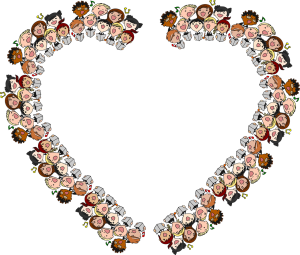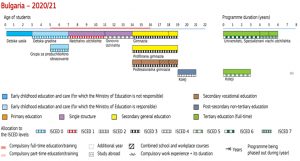Αρχική » schools
Αρχείο κατηγορίας schools
TPM 3 Kos Models Shaping REF Interventions
REF has extensive experience and knowledge surrounding the types of interventions in and approaches to Roma education. REF currently structures its grants around five good practice models for achieving impact in different countries and policy settings.
Embedding effective models for Roma education requires strong partnerships with national and local education authorities and implies intense communication with them throughout the process of adjusting best practice models to national and local contexts.
Expanding Access to Preschool Education: Early Childhood Education
REF’s early childhood education model aims to improve the school readiness and early childhood development outcomes of Romani children under age six by improving the enrollment and attendance in the mainstream preschool services; enhancing the parenting skills and improving the practices of Romani parents; strengthening the link between parents and preschool and kindergarten facilities; and raising the quality of early childhood education services, such as teaching and learning methods.
Avoiding Early School Leaving in Primary Education
The primary education model intends to improve the primary education outcomes of Romani children aged between six and fourteen by supporting primary education enrollment and school-after-school programs (tutoring and mentoring) with improved access (enrollment) to primary education, preventing early school leaving, enhancing parental skills, and strengthening the link between parents and schools, providing remedial classes to children and offering professional support and guidance to school staff and authorities.
Expanding Access to Secondary Education
The secondary education model aims to improve the academic performance of students and to maintain the retention and graduation rate of Romani secondary school students through better outreach, provision of scholarships, school-based mentorship support and tutorship support.
Expanding Access to Higher Education
The higher education model includes the component of RomaVersitas, a program intended to improve the retention, performance and graduation levels of Romani full-time tertiary education students. RomaVersitas provides academic tutoring and mentoring to help strengthen students’ Romani identity and community participation. This model consists of compulsory and optional components. It serves as a bridge for young Romani scholars and includes scholarships, mentoring, tutoring and additional training in professional development and foreign language competences.
Second Chance Programs for Adult Functional Literacy and Formal School Completion
The adult education and training model aims to improve the education level and employment prospects for young Romani adults. It provides those with incomplete primary and/or secondary education with tutoring and financial support for completing formal primary and/or secondary education. This model also aims to improve the literacy and social communication skills of illiterate and semi-literate Romani parents (mainly mothers) of preschool- and school-age children and enhance their involvement in their children’s education through provision of non-formal literacy and social communication skills trainings.
Roma in Portugal
Presentations about Roma in the area and the educational system during the LTTA in Portugal at the partner school Agrupamento de Escolas de S. João da Talha
Roma in Italy
Presentations of IPALBTUR about Roma in the area and educational practices for their inclusion
IT Presentation of School Ipalb Tur
IT Real opportunities for ROMA students
Objectives at the EU level for the period up to 2030
The Commission sets seven objectives at the EU level for the period up to 2030. Three
of these objectives are horizontal in the areas of equality, inclusion and participation. The other
four are sectoral objectives in the areas of education, employment, housing and health. To
implement these objectives effectively, they need to be backed up with the ability to measure
progress.
Download the file here EU policies Horizontal Sectoral
Access to Early Childhood Education and Care for Roma children
 The Council Recommendation on high-quality Early Childhood Education and Care (ECEC) systems underlines the importance of access to ECEC services for all children and recalls that quality ECEC can be “an effective tool to achieve educational equity for children in a disadvantaged situation, such as some migrant or ethnic minorities (for example Roma)”.
The Council Recommendation on high-quality Early Childhood Education and Care (ECEC) systems underlines the importance of access to ECEC services for all children and recalls that quality ECEC can be “an effective tool to achieve educational equity for children in a disadvantaged situation, such as some migrant or ethnic minorities (for example Roma)”.
It can provide Roma children with a start in life that is equal to their non-Roma peers’, which is essential to break the cycle of intergenerational transmission of poverty. To reach this objective, ECEC needs to be accessible, available and affordable.
Low participation
As the percentage of Roma children aged between 4 and the starting age of compulsory primary education who participated in ECEC amounted to only 53% in the nine surveyed countries in 2016, the EU Roma strategic framework for equality, inclusion and participation for 2020-2030 set out an ambitious target of at least 70% of Roma children aged 3 and above participating in ECEC by 2030.
Italian educational system
Stages of the education system
The Italian education and training system includes ECEC (0-3 and 3-6), primary, secondary, post- secondary and higher education.
Early childhood education and care (ECEC)
ECEC for children aged less than 3 years is offered by educational services (servizi educativi per l’infanzia) ECEC for children aged from 3 to 6 years is available at preprimary schools (scuole dell’infanzia).
The two offers make up a single ECEC [12] system, called ‘integrated system’, which is part of the education system and is not compulsory. Although being part of the same system, the ECEC 0-3 is organised by the Regions according to the single regional legislations, while the 3-6 offer is under the responsibility of the Ministry of education.
Compulsory education
Spanish educational system
Spain educational system
Stages of the education system
Pre-primary education is up to 6 years of age. Although it is not a compulsory education stage, the second cycle is free in all publicly-funded schools (public schools and publicly-funded private schools). Public schools providing it are called pre-primary schools and those also offering primary education are called pre-primary and primary schools.
Basic education is compulsory and free in publicly-funded schools. It lasts ten years and it is divided into two stages:
- Primary education, provided in primary schools. It covers six academic years, usually studied between the ages of 6 and 12
- Compulsory secondary education, studied in secondary schools, between the ages of 12 and 16. At the end of this stage, students receive the first official certificate, the Lower Compulsory Secondary Education Certificate, which allows them to have access to upper secondary education or the world of work.
Greek education
Greek educational system
Stages of the education system
Compulsory education lasts 11 years and extends from the ages of 4 to 15. The stages of the Greek education are mainly 3:
1) Primary education
Primary education includes pre-primary and primary schools.
Nipiagogeio
Nipiagogeio (pre-primary school) in Greece has become compulsory for all 4-year-old children, since school year 2018/19. School year 2020/21 foresees the integration of the two-year compulsory pre-primary school in the few remaining municipalities.
Infant centres (vrefikoi stathmoi), infant/child centres (vrefonipiakoi stathmoi) and child centres (paidikoi stathmoi) represent early childhood care. They are run under the remit of the municipal authorities. They cater for children between the ages of 2 months and up to the age of the beginning of compulsory education.
Dimotiko scholeio (περισσότερα…)
Bulgarian educational system
Bulgarian educational system
Stages of the Education System
Early Childhood Education and Care
Early childhood education and care is managed by local authorities, and is not part of the State’s responsibilities, between the ages of 0 – 3. Between the ages of 3 – 6/7 it becomes part of the responsibilities of the Ministry of Education and Science.
Kindergartens are institutions within the pre-school and school education system for raising, education, and socialization of children from age of 3 up to the age of 7 (entering first class) in line with the state pre-school education standard. Children aged 2 can also enter kindergarten in line with the conditions and rules of the Law on Pre-School and School Education.
LTTA 1 Hungary
LTTA 1 held at Gyorgy Vocational School Hungary from 22/11 to 26/11/2021
Title: New Roma generations are growing: inequalities, resources
Training schedule:
Day 1 – Introduction of participants: a brief welcome by the trainers and an activity allowing participants to get to know each other and to learn some elements about their specific work contexts. Presentation of the aims and objectives of the training, as well as some of the main elements behind the training approach. Education in Roma communities. Closing the gap between schools and families Assessing Roma students’ needs (περισσότερα…)











